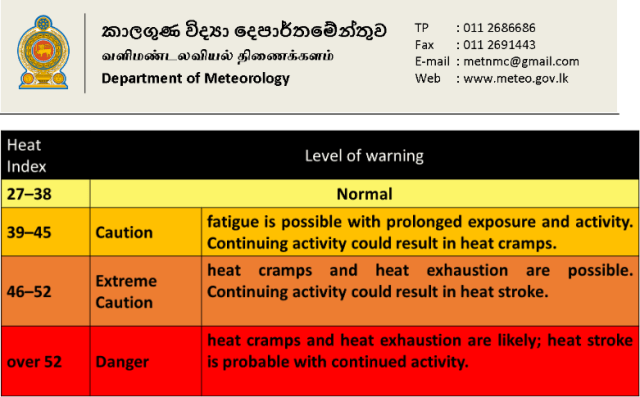
As educators, our primary responsibility extends beyond imparting knowledge to ensuring the well-being of our students. With the scorching sun blazing down, it’s crucial for schoolteachers in Sri Lanka to be well-informed about heat-related health risks. Let’s delve into the facts and practical steps to safeguard our students during these sweltering days.
Understanding Heat-Related Illnesses
Heat Exhaustion
Heat exhaustion occurs when the body struggles to regulate its temperature due to excessive heat exposure. Common symptoms include:
- Profuse sweating
- Weakness and fatigue
- Dizziness
- Nausea
- Headache
Heat Cramps
Heat cramps result from electrolyte imbalances due to sweating. These painful muscle spasms often affect the legs, arms, or abdomen. Hydration and rest are essential to prevent heat cramps.
Heatstroke (Sunstroke)
Heatstroke is a severe condition that demands immediate attention. It occurs when the body’s core temperature rises dangerously high. Signs of heatstroke include:
- High body temperature (above 104°F or 40°C)
- Confusion or altered mental state
- Hot, dry skin (lack of sweating)
- Rapid heartbeat
Preventive Measures
Hydration Is Key
- Encourage students to drink water frequently. Dehydration exacerbates heat-related illnesses.
- Avoid sugary or caffeinated beverages, as they can lead to further dehydration.
Time Outdoor Activities Wisely
- Schedule outdoor play and physical activities during cooler hours, such as early morning or late afternoon.
- Avoid peak sun hours (10 a.m. to 4 p.m.), when the heat is most intense.
Shade and Rest Areas
- Provide shaded spots for students during breaks. A cool area allows them to rest and recharge.
- Emphasize the importance of rest to prevent overheating.
Dress Smartly
- Lightweight, loose-fitting clothing helps regulate body temperature.
- Light-colored attire reflects sunlight, reducing heat absorption.
Ensuring the well-being of our students during scorching days is paramount. Let’s take proactive steps to create a safer environment:
Look for thease Solution
- Water Stations: Set up accessible water stations throughout the school premises. Encourage students to hydrate frequently. Proper hydration helps regulate body temperature and prevents heat-related issues.
- Cooling Measures:
- Fans and Air Circulation: Install fans in classrooms and common areas. Proper air circulation reduces heat buildup.
- Cooling Rooms: Designate specific rooms with air conditioning or natural ventilation as cooling zones. Students can seek refuge during peak heat hours.
- Wet Towels: Provide wet towels or cloths for students to place on their necks or foreheads. This simple measure can offer relief.
- Maximize Shade:
- Cold Shower or Bath: If available, have the person take a cold shower or bath to help lower their body temperature.
- Use Wet Towels or Icepacks: Apply wet towels, fans, or icepacks to the neck, groin, and armpits. These areas help cool the body more effectively.
Conclusion
As schoolteachers, let’s be proactive in safeguarding our students. By staying informed and implementing preventive measures, we can create a safer learning environment even amidst scorching temperatures. Remember, our actions today impact the well-being of the next generation. Let’s prioritize their safety and well-being above all else.
Stay vigilant, stay informed, and keep our students safe!
-Metroadd Net- Safety- Sun -Life Style- Nueraadd- By Palitha Ariyarathna -Safety Instructor and EMERGENCY FIRST AIDER
REF: ECONOMYNEXT – Sri Lanka’s Education Ministry has issued a warning to school officials against exposing children to the sun. This advisory comes as the Natural Hazards Early Warning Centre issued a heat index advisory

